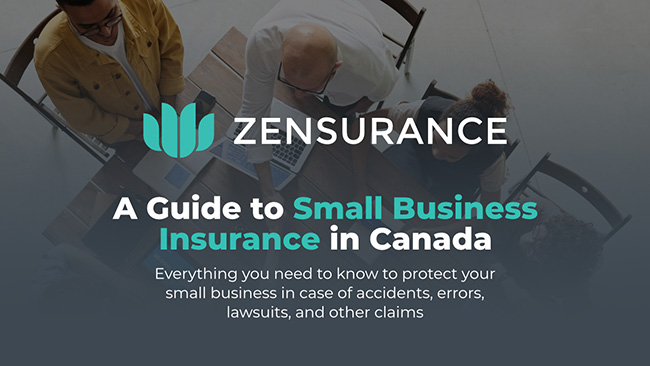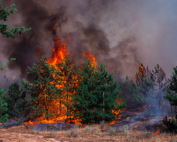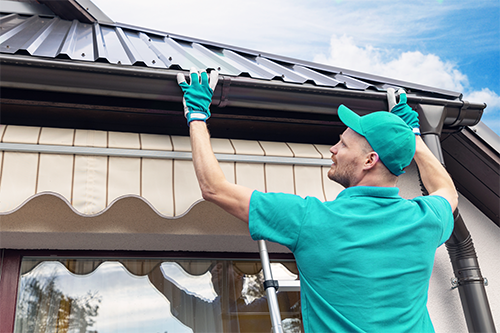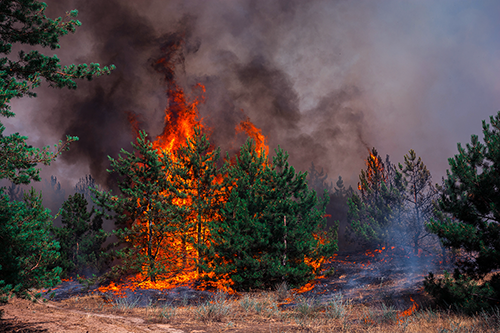Roofing contractors are unique professionals. They have in-depth knowledge of roofing systems and installation techniques, work at significant heights, and have an eye for detail for spotting roofing issues and the source of leaks that may not be obvious.
Although roofers are subject to the whims of fluctuating material costs, supply chain disruptions, competition, and skilled workforce shortages, their vital services keep them in high demand.
According to IBISWorld, as the Canadian housing market recovers in the coming years as interest rates decline, revenue from the construction of new homes, roof replacements, and maintenance will drive demand for roofing services. The roofing market’s size is projected to grow through 2030.

Download Our FREE Insurance Guide
Learn everything you need to protect your small business.
Whitepaper download
"*" indicates required fields
Your email address will be used by Zensurance to provide latest news, offers and tips.
You can unsubscribe at any time.

A separate poll of roofing contractors in late 2024 by myCLEARopinion, a business-to-business research consultancy, found 72% expect their revenue to grow in 2025 and 77% anticipate residential roofing sales will increase over the next three years.
That’s good news for roofing contractors, and it highlights the need to have a comprehensive roofing insurance policy to prepare for the season ahead.
What Does Roofing Liability Insurance Include?
A roofing insurance policy includes several types of coverages to form a comprehensive policy roofers need, including:
- General liability insurance: General liability insurance covers third-party bodily injury and property damage claims arising from your roofing company’s operations or that occur on your business premises. For example, if a customer or passerby is injured by your roofing work by tripping over tools or shingles on the ground, general liability insurance may cover their medical and rehabilitation expenses. It also provides you with legal defence funds if you are sued.
- Tools and equipment insurance: Tools and equipment insurance protects against damage to and loss of your portable roofing tools and equipment if they’re stolen, vandalized, or damaged by fire, water, or natural disasters. It covers a wide range of tools and equipment, from handheld nail guns, ladders, and roof brackets to roofing kettles.
- Pollution insurance: Pollution insurance covers specific environmental liabilities associated with pollution caused by your roofing operations while at a job site. Whether your work causes gradual or sudden environmental damage to properties or third-party bodily injuries, it covers fines, emergency response and clean-up costs, and medical expenses to injured persons.
- Commercial property insurance: Commercial property insurance covers your roofing business’s property, contents, and inventory from damages and losses due to fire, water damage, natural disasters, theft, and vandalism.
- Commercial auto insurance: Commercial auto insurance is required for any type of vehicle used for business purposes, including pickup trucks, vans, and trailers that transport people, raw materials, tools and equipment, and packaged goods. Private-passenger auto insurance is not designed to cover business vehicles.
- Professional liability insurance: Also called errors and omissions (E&O) insurance, professional liability insurance covers roofing businesses that provide advice and services to customers to cover claims of professional negligence, mistakes, and failing to deliver a service as promised.
Many roofers also offer gutter cleaning and installation services to their customers. That, too, can be covered by a roofing insurance policy.
What Steps Should Roofers Take to Protect Their Livelihoods?
In addition to adhering to recommended safety tips for roofing companies and their crews to minimize accidents and injuries, roofers should consider the following steps to protect their finances:
- Ensure your roofing insurance policy’s coverage limit has at least $2 million in coverage.
- Have written contracts with customers for every job you do.
- Ensure that any subcontractors or employees are trained for the work they are tasked with doing and that subcontractors have liability insurance to cover their work.
- Be aware of changes or updates to building codes and municipal permit requirements.
- Consider including an installation floater in your policy to cover materials you use for a job that have yet to be installed.
Furthermore, if your roofing business offers hot-torch roofing, be sure to follow the safety tips recommended by the Infrastructure Health and Safety Association to prevent accidents, injuries, and damage to customer properties.
Low-Cost Roofing Insurance: Preparing for Summer 2025
Zensurance is the go-to source for comprehensive, low-cost roofing insurance for Canadian roofing professionals.
Fill out our online application now for a free quote.
Get the tailored, adequate insurance coverage you need before the busy roofing season begins from our knowledgeable team of licensed brokers so you can concentrate on serving your customers and growing your business.
Recent Posts
What Type of Insurance Do Eavestrough and Siding Contractors Need?
All professionals or small businesses have liability risks regardless of their industry or the services they provide. Gutter cleaning professionals are no different. Here’s why gutter cleaning businesses need insurance.
Is Your Small Business Ready for Wildfire Season?
The Canadian wildfire season now starts earlier, and wildfires have become more frequent and ferocious. Here are some tips to help prevent wildfire damage to your business property.
8 Types of Insurance Electrician Contractors Need
In many provinces, electricians must carry liability insurance to obtain and maintain their licences. Without it, you’re leaving your business and livelihood exposed. Get a straightforward rundown of the types of coverage electricians need and why they matter.
Sign Up for ZenMail
"*" indicates required fields








